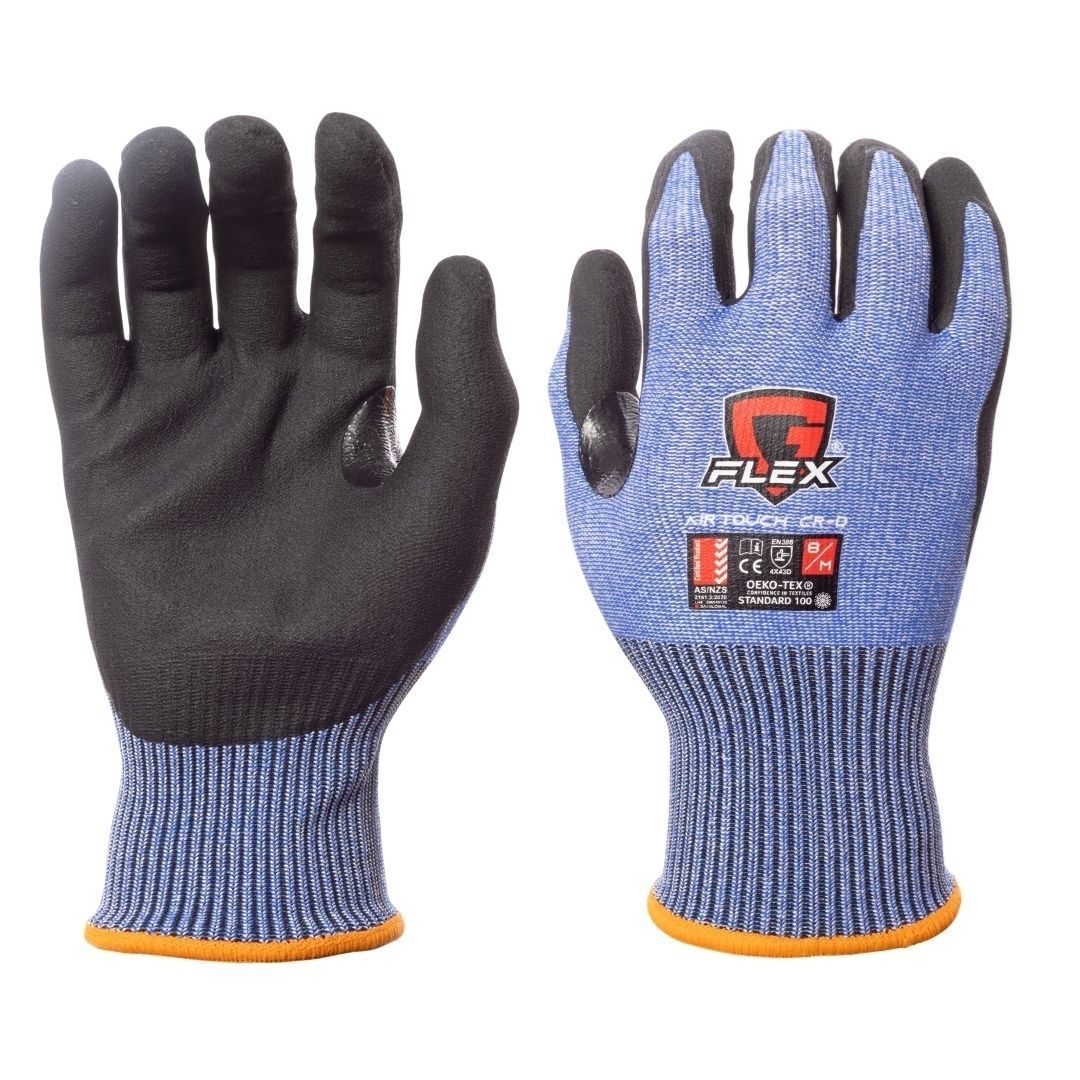Not all safety standards are legislated … so not all safety products keep your workers safe!

New Standards For Improved Hand Protection in the Workplace
Many workplaces have strict PPE requirements that cover hearing, head and eye protection, and footwear, yet hand protection often gets overlooked.
This is surprising considering research undertaken by the Queensland Injury Surveillance Unit at the Mater Health Service found that Queensland males aged 14-46 working in construction, manufacturing, and mining industries are the most at risk of hand injuries. This segment accounted for over half of the 1182 total recorded hand injury cases for the documented period of July 2011 to June 2013.
Choosing Quality Safety Gloves
So with today’s myriad of industrial hand protection options on the market, how do you choose a quality glove that will provide your workers with the protection they need?
Richard Donarski from SAI Global, the leading certification and risk management company explains, “It is a common misconception that all Personal Safety Items, including gloves, are subject to and must meet all mandatory standards that are in place in Australia”.
“But the reality is, as many standards aren’t legislated, some manufacturers choose not to apply certification to their manufacturing processes. The consequence is that the very product designed to keep you safe, may not necessarily do its job as expected”.
The Australian and New Zealand certification AS/NZS 2161 Occupational Protective Gloves series covers risks and injuries including mechanical risks, thermal heat, cuts and abrasions, and chemical hazards. These standards are represented by the corresponding symbol and number stamped onto the glove. The higher the number, the higher level of protection.
Managing Director of Australian-owned PPE manufacturer Elliotts, Anthony Elliott explains, “Certain manufacturers claim compliance to a standard, or claim that their products are manufactured to meet the requirements of a certain standard. But this is not the same as being actually ‘certified’ to a standard, and there is no legislative body actually regulating these claims”.
Requirements for Standard Certification
In order to claim certification to a standard, the manufacturer must engage an independent certification body such as SAI Global and satisfy the following:
⦿ All test certificates specified in the appropriate standard must have been conducted by an accredited independent third-party testing laboratory;
⦿ The manufacturing facility must undergo an audit to ensure systems and procedures comply with the appropriate standards;
⦿ The manufacturing facility must undergo an annual audit by the same third party; and
⦿ Products must be retested on a regular basis.
Even when choosing a certified glove, it’s important to understand that all test samples are taken from the palm of the glove, meaning certification does not apply to the top of the hand and sides of the fingers.
Elliotts have been manufacturing quality safety gear for 50 years, and have seen countless cheap imports and unreliable products flood the market, putting workers at risk.
“We manufacture a wide range of gloves to cater to the needs of several industries, taking into account the safety requirements for different applications and tasks”.
Elliotts’ Mec-Flex glove and G-Flex glove ranges were the first gloves in the world certified to Australian and New Zealand Standard AS/NZS2161.3:2005 and CE standards by SAI Global.
CONTACT US
If you'd like to learn more about our safety products or need some expert advice on which safety gear to get for your needs, feel free to get in contact with us at Elliotts Australia. We would love to assist you! Call us on 07 3265 2944 or send us a message.








